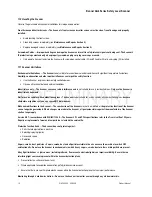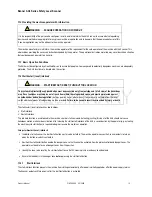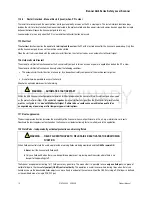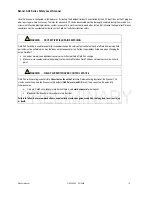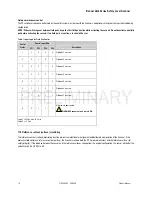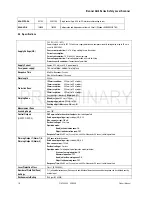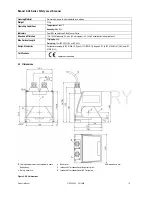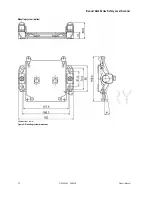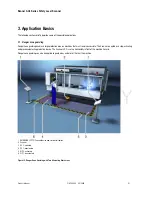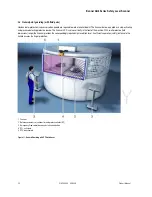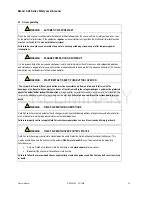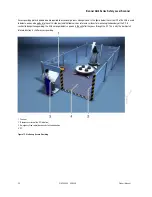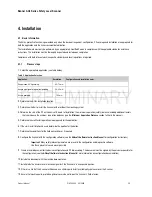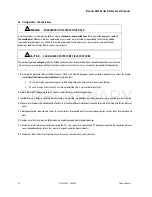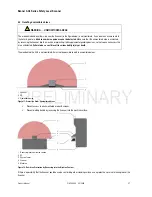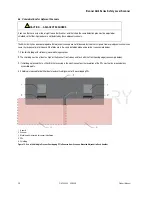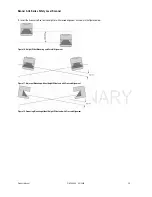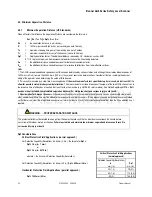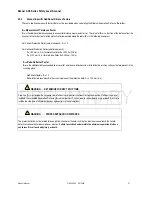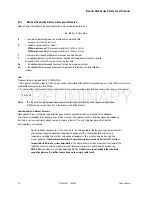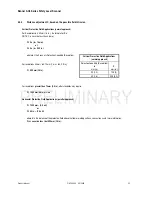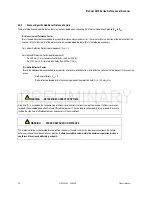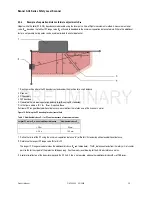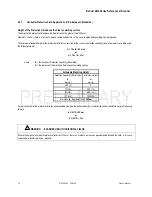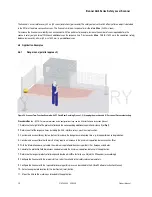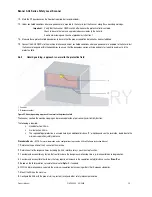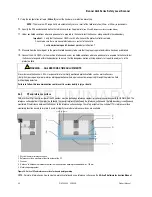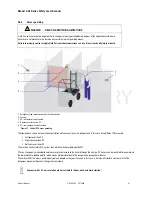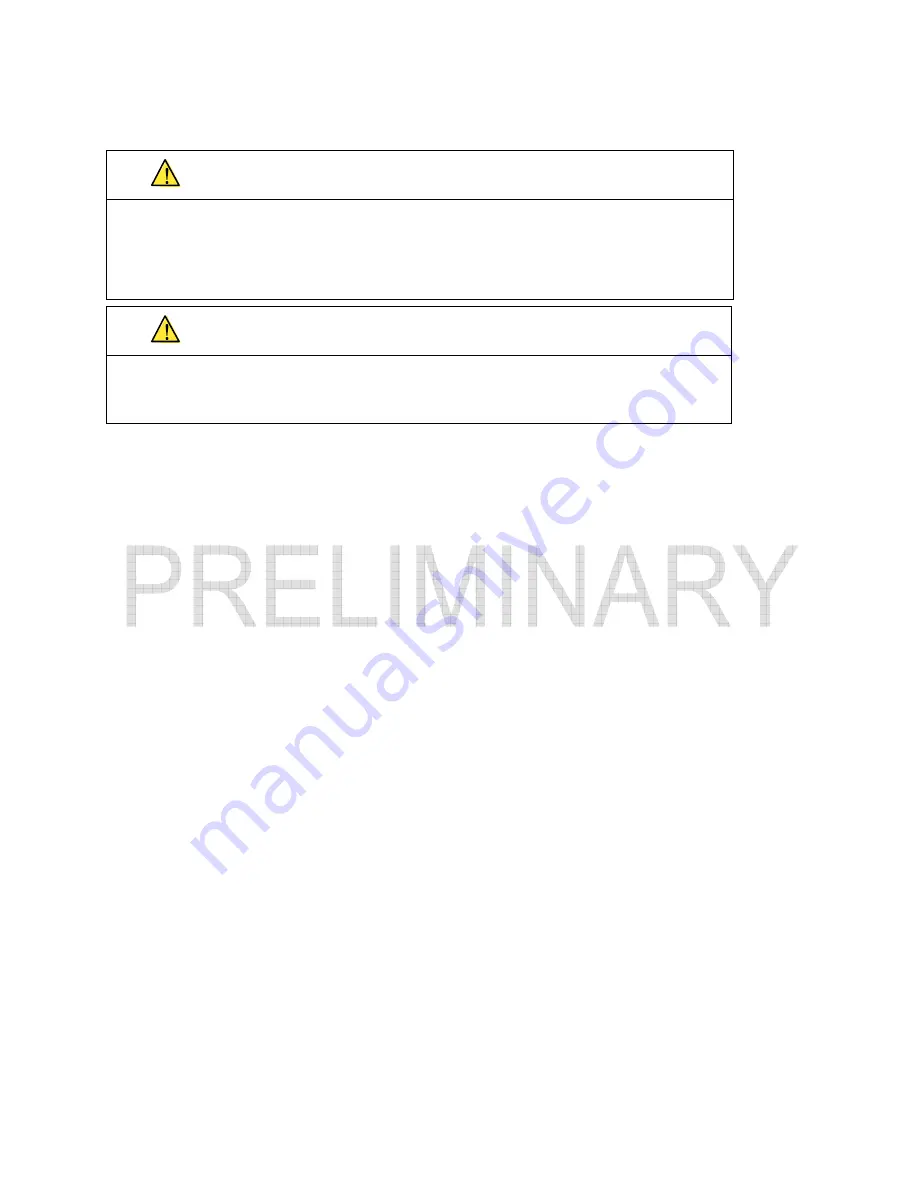
Banner AG4 Series Safety Laser Scanner
4.2
Configuration Considerations
WARNING . . . SHADOWING IN THE PROTECTIVE FIELD
Permanent objects in the protective field can create a
shadow or unprotected zone
that may provide
an access route to
the hazard point
. Make sure that any unprotected access routes are eliminated by repositioning the AG4 or by adding
supplemental guarding devices. Failure to eliminate unprotected hazard point access routes could create a potentially
dangerous condition that may lead to serious injury or death.
CAUTION . . . CONE-SHAPED PROTECTIVE FIELD CONTOURS
The positioning of
cone-shaped
protective field boundaries are not recommended. Cone-shaped field boundaries or contours
rely on the accuracy and repeatability of the angular measurement, which is not as accurate as rectangular field boundaries.
1.
Dimension the protective field so that the Scanner's OSSDs can stop the dangerous movement before personnel can access the hazard
(See
AG4soft Software Instruction Manual
for more details).
This PF dimension requirement applies to both single-field and multiple-field switchover applications.
PFs with a range of less than 200 mm are not permitted (this is a preset, default setting).
2.
Ensure that the PF adequately covers all access routes that may lead to the danger zone.
3.
If establishing a sufficiently complete protective field is not possible, use additional protective measures, e.g. protective guards or fencing.
4.
Make sure to incorporate all response time factors, e.g. Scanner and control element response times and other stop time factors that may
apply.
5.
Add the appropriate response time values to account for any foreseeable machine stop time degradation, such as those due to brake pad
wear.
6.
Remedy any effects of protective field shadowing by adding supplemental guarding devices.
7.
Observe the lateral tolerance when dimensioning the PFs, (e.g., do not use cone-shaped PF boundaries to define the separation distance;
cone-shaped boundaries rely on less accurate, angular resolution measurements).
8.
Consider any other factors that might require an increase in the separation (safety) distance.
26
P/N 144924 05/2009
Product Manual

